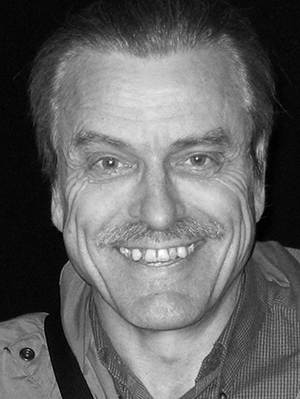
Dr. Olof Walter Lennartsson, an internationally recognized space plasma physicist, died suddenly on 2 February 2017 at his home in Los Altos, Calif. Walter’s research combined theory, analysis of data from instrumentation on the ground and aboard spacecraft, and his own insight into physical processes to enhance our understanding of Earth’s magnetosphere and its dynamics.
Early Career
Walter studied theoretical space physics from 1966 to 1973 at the Swedish Royal Institute of Technology (KTH) with first-generation space pioneers Lars Block, C.-G. Fälthammar, and Rolf Boström in the laboratory founded and directed by Hannes Alfvén. His thesis work addressed electric field and current distributions in the ionosphere. That work was one of the earliest to suggest an electric potential drop along auroral magnetic field lines.
He published subsequent work on the subject in several papers throughout his career. His theoretical work contributed significantly to the identification of possible mechanisms that could permit the formation and maintenance of large electric fields parallel to the magnetic fields in and above Earth’s ionosphere in the auroral zones.
Walter’s work, along with that of many others, provided the motivation to develop new and improved techniques specifically designed to test the proposed mechanisms. In particular, he helped to develop very high time resolution plasma instrumentation that was deployed on NASA’s Fast Auroral Snapshot Explorer mission and the Magnetospheric Multiscale mission.
After leaving KTH, Walter spent 3 years at NASA’s Marshall Space Flight Center in Huntsville, Ala., where he applied himself to the interpretation of complex data from early spacecraft in Earth’s magnetosphere.
Morphology and Dynamics of the Magnetosphere
In 1978, Walter joined the Space Physics Group at the Lockheed Palo Alto Research Laboratory (LPARL) in Palo Alto, Calif. The LPARL group pioneered the use of ion composition measurements of hot plasmas in Earth’s magnetosphere. The group had recently discovered that at times, oxygen ions (O+) could be a significant component of the hot plasma, implying that magnetospheric plasma could also come from Earth’s ionosphere rather than solely from the solar wind as had previously been assumed. Walter used this, as well as other aspects of ion composition, to better understand the complex transport and heating processes that form Earth’s plasma sheet.
Walter, working with members of the group, soon became the driving force behind the analysis and interpretation of data from the LPARL mass spectrometer on board NASA’s International Sun-Earth Explorer 1 (ISEE-1) spacecraft. He and his collaborators used data from ISEE-1 as well as several other Earth-orbiting spacecraft over the following years to address the role of ion composition in magnetic storms, substorms, geomagnetic pulsations, and, most importantly, the formation and dynamics of Earth’s plasma sheet.
The early work was done to establish the morphology and dynamics of O+ and other heavy ions in all regions of Earth’s magnetosphere. Walter’s papers on morphology and dynamics of the plasma sheet are fundamental reading for all students studying Earth’s magnetosphere.
Physical Mechanisms and Processes
After magnetospheric morphology and dynamics were reasonably established, the focus of Walter’s work shifted to elucidating the physical mechanisms and processes acting on the magnetosphere. Magnetospheric researchers now use large-scale models to explore magnetospheric dynamics, guided in their work by the careful interpretation of magnetospheric composition data in Walter’s papers.
Walter applied his keen analytical skills and insights to improve the designs of several very successful space plasma instruments.
In addition to his interpretation and theoretical work, Walter applied his keen analytical skills and insights to improve the designs of several very successful space plasma instruments built by the LPARL group. Notable among these were the High-Energy Range Spectrometer instrument on the European Space Agency’s Giotto mission to Comet Halley and the Toroidal Imaging Mass-Angle Spectrograph instrument on NASA’s Polar spacecraft.
Walter published 91 papers, including 30 single-author papers. He was a frequent speaker at international conferences, where his advice and counsel were often sought and freely given. He was an outstanding scientist and a good friend to the many people with whom he worked.
Walter retired from Lockheed Martin in 2013. He is survived by his wife of 38 years, Nancy Lennartsson, and their son, Nils.
—W. K. Peterson (email: [email protected]), Laboratory for Atmospheric and Space Physics, University of Colorado Boulder; and Edward G. Shelley, Lockheed Martin, Ashland, Ore., retired
Citation:
Peterson, W. K.,Shelley, E. G. (2017), O. Walter Lennartsson (1943–2017), Eos, 98, https://doi.org/10.1029/2017EO078727. Published on 04 August 2017.
Text © 2017. The authors. CC BY 3.0
Except where otherwise noted, images are subject to copyright. Any reuse without express permission from the copyright owner is prohibited.
